C2 PROJECT
The many variants of C2s built
C2 Cabs
At first glance, all the 28-tonne locos from the first Russian PT-4 to the last Harbin C2 look the same. At a more detailed inspection, I expect every single one was different in some respect. Several variants of cab have been fitted to C2s and their predecessors. Note that we use 'C2' as an abbreviation for the class of 28-tonne loco in China that sometimes had other designations.
Short and Long Cabs
There are two main categories of cab - the short cab and the long cab, as illustrated below.
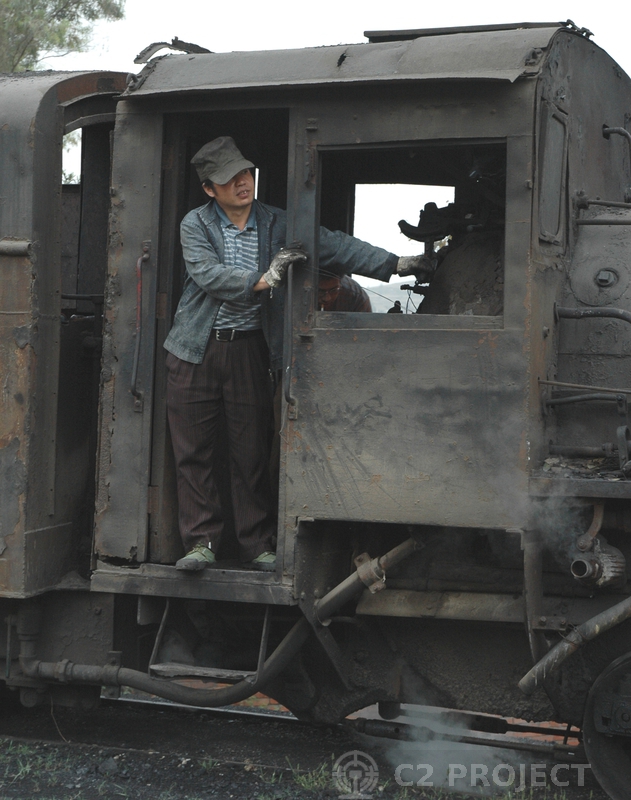
Short cab on a C2 built at Shijiazhuang in 1982, at Huanginggou (Photo © Paul Molyneux-Berry)
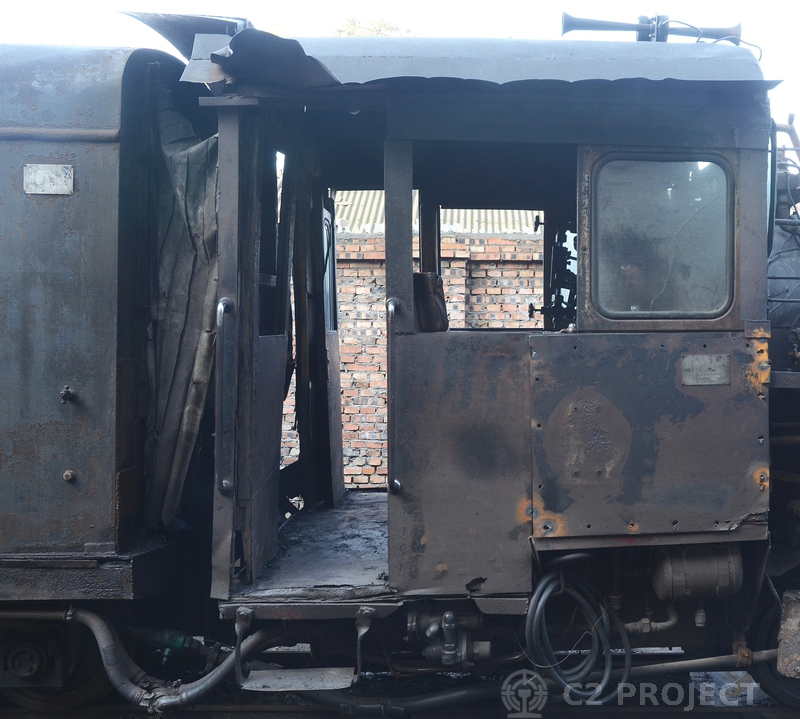
Long cab on a C2 built at Harbin in 1983, at Rongshan (Photo © Paul Molyneux-Berry)
Short cabs are 1700mm long, have two cabside openings (usually one window and one door), and the rear part with the lower floor is 50mm shorter than the front part with the raised floor.
Long cabs are 2000mm long, and the locomotive main frame is also 300mm longer at the rear. The most obvious distinguishing features are that they have two side windows and a door, and that the rear part with the lower floor is 250mm longer than the front part.
Some early locos were later rebuilt with longer cabs; in some cases the frames underneath may have been extended or renewed completely; the solution at Yinghao is shown in the image below. Look closely at the rear and it is clear that the main frame is not extended: we can see through where it would be. The bufferbeam remains in place under the front of the cab doorway; long angled brackets support the back of the cab and an extended buffer is fitted
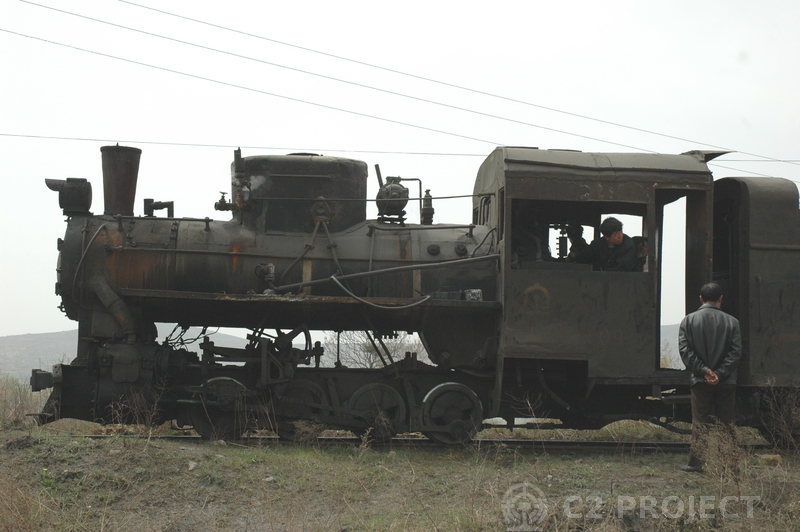
A silhouetted C2 at Yinghao with a non-standard long cab (Photo © Paul Molyneux-Berry)
The 'Russian Standard' Cab
The predecessors of the C2 were built in Russia and Eastern Europe. The standard cab design was relatively narrow (1920mm) and short, with one window and one door each side. Because they were designed to operate in the freezing Russian (and Chinese) winters, the cab was wooden-framed and double-skinned for insulation, with a thin metal sheet on the outside. It was totally enclosed with a corridor connection to the tender. Windows were square-cornered; no windows were fitted in the back of the cab as the rearward view was obscured by the tender.
Our Polish drawings show this early cab type, and the KP-4s and others exported to China were of this type. The earlier 28-tonne locos (C2s and equivalent) built in China also had a similar cab.
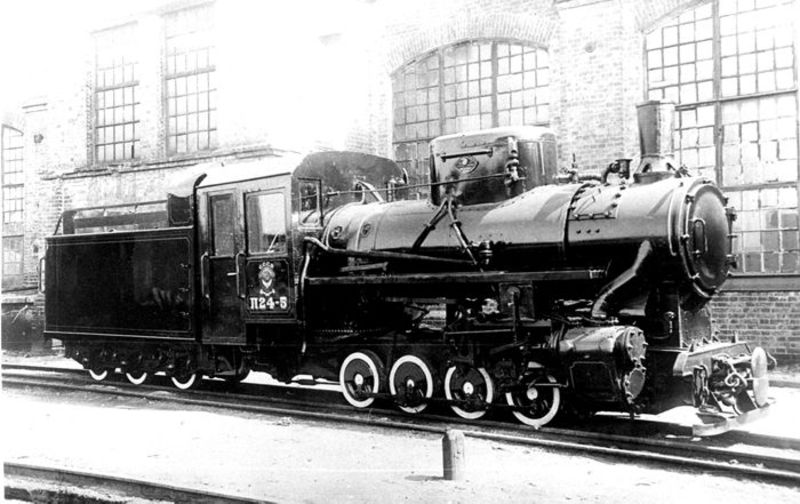
Locomotive P24-5 built by Kolomna Works (8223/1941) (Photo from the collection of L. Moskalev)
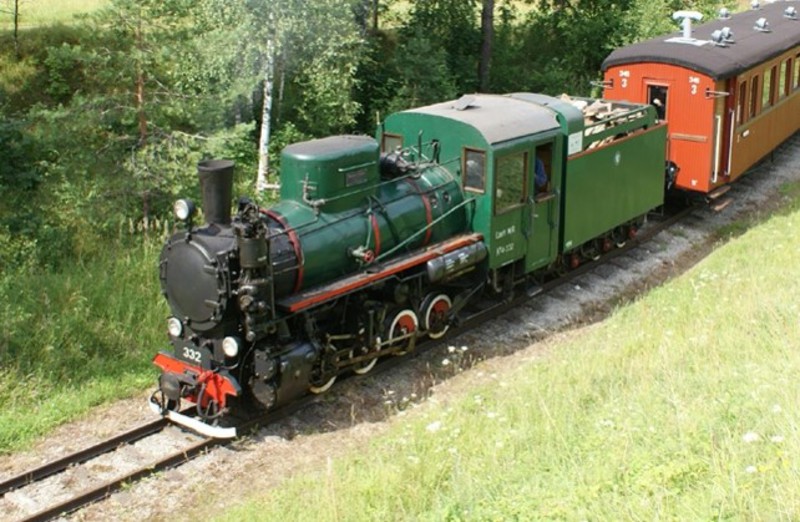
Preserved Polish-built KP-4 in Europe: tender a little narrower than the cab (Thanks to the Estonian Narrow Gauge Railway Museum at Lavasaare)
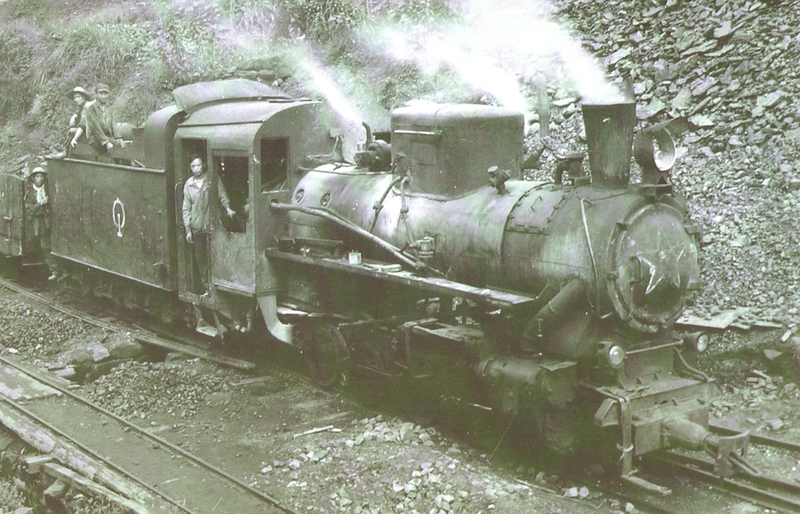
Archive photo of a 28 tonne loco at the Shibanxi line in the early 1960s with a short, narrow cab. Judging by the internal regulator and the shape of the worksplate, this loco was built in Europe (From 'Jiayang Narrow Gauge Steam Train: A Tourist Guide for Photographers and Sightseers', ISBN 978-7-8022-0633-5)
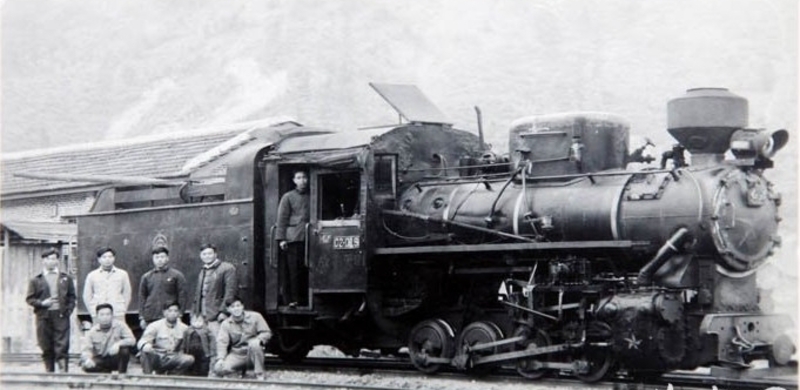
Archive photo of a C2 at the Jiangxi forestry line in the early 1960s with a short, narrow cab. Judging by the position and style of the worksplates, this may be an early example from Harbin (From 'Narrow Gauge Railways of China: Guangdong, Jiangxi and Fujian Provinces' by John Athersuch, ISBN 978-1-900340-33-5)
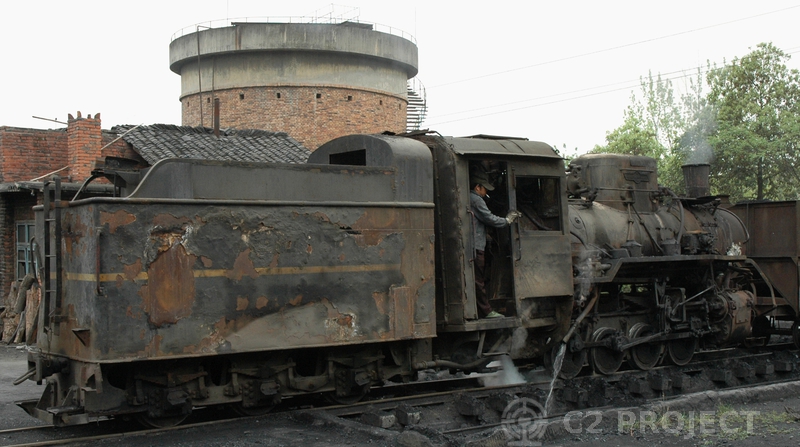
A C2 at Huanginggou showing the short, narrow cab and the lack of windows in the cab back. This loco carries a Shijiazhuang worksplate; the 9th loco built in 1982. 25 years hard work has taken its toll on the loco's appearance! (Photo © Paul Molyneux-Berry)
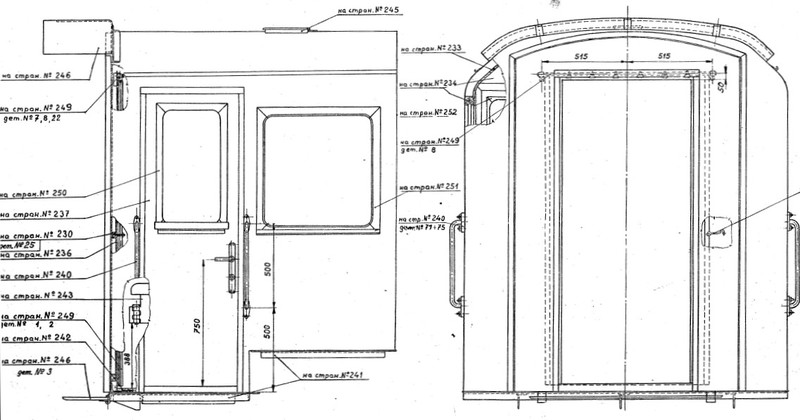
General Arrangement Drawing of the KP-4 Cab
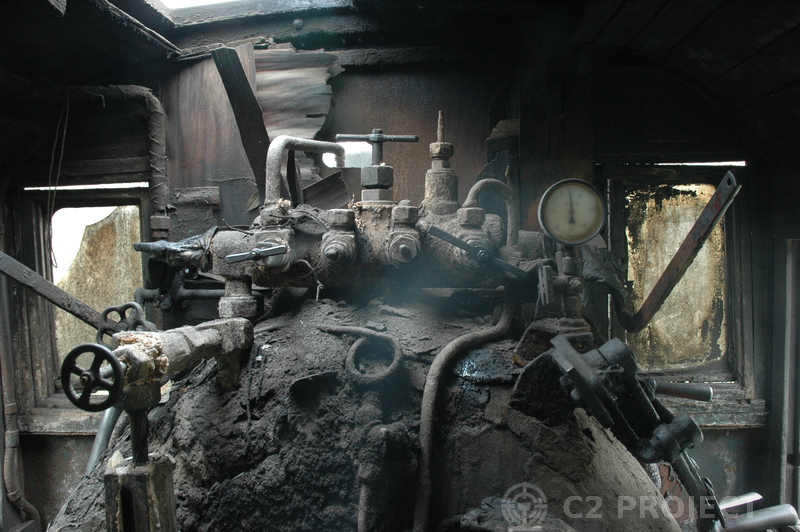
Looking forward in the cab of the C2 at Huanginggou showing the manifold, rectangular windows and wooden panels inside the cab (Photo © Paul Molyneux-Berry)
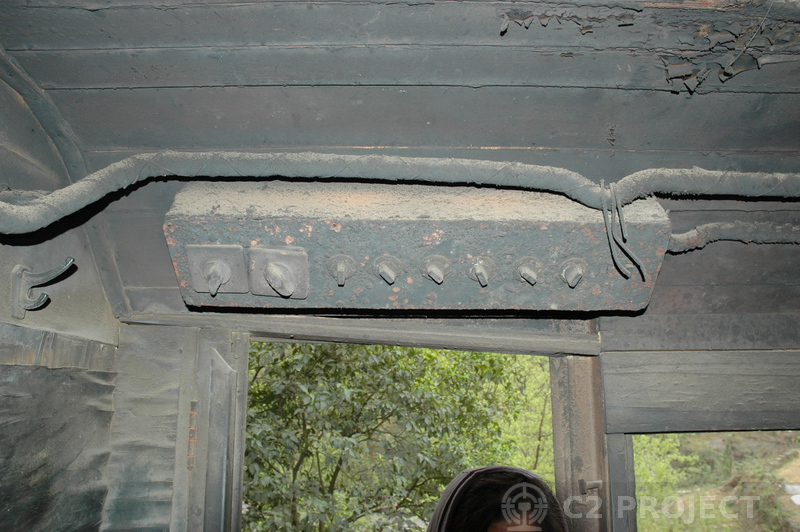
Above the fireman's head is the bank of electrical switches; this also shows the planked roof lining and the coat-hook at the back of the cab (Photo © Paul Molyneux-Berry)
The 'Sichuan' Cab
For those C2s operating in the warmer South-West of China, a more open cab was appropriate. The railways at Pengzhou and Shibanxi used a 'short' cab design very similar in dimensions to the 'Russian Standard', but without a backsheet or corridor connection to the tender. The cab entry is via the gap between cab and tender, so the cabside doors are replaced with a fixed panel with large unglazed opening. On some examples, the forward part of the cabside is hinged for maintenance accessibility. It appears that the Pengzhou locos were rebuilt at the Chengdu Railway Machinery Factory in the 1980s and may have gained their unusual cabs, forward frame extensions and slope-back tenders at that time. Shixi works on the Shibanxi railway continues to outshop new or heavily rebuilt locos with this type of cab. The Ganzhou Forestry Railway in Jianxi Province also had some locos with this cab type. A further variant existed on one loco at Ruyang; this was very similar to the Pengzhou design, but on a long frame and with the cab acess step on the loco rather than the tender.
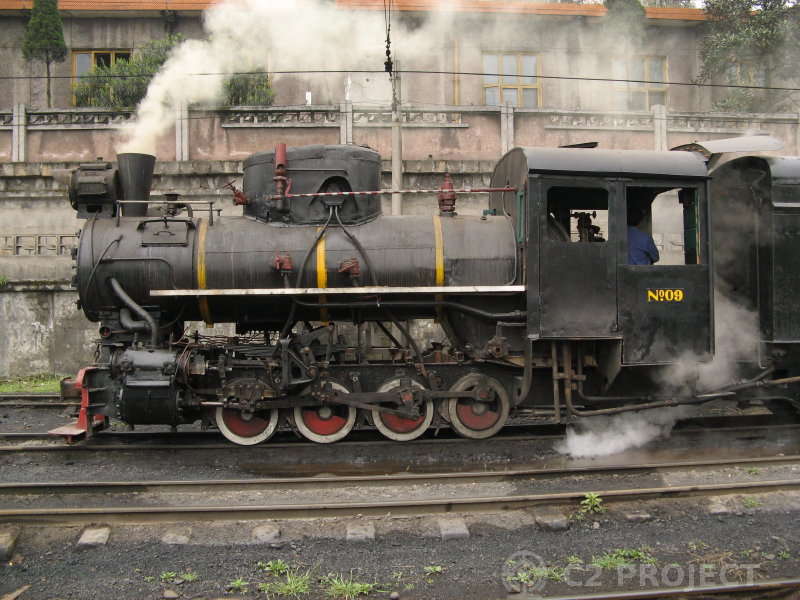
An old-style wooden-framed cab at Shibanxi, showing the open back and the space between loco and (6-wheel) tender for access (Photo © Paul Molyneux-Berry)
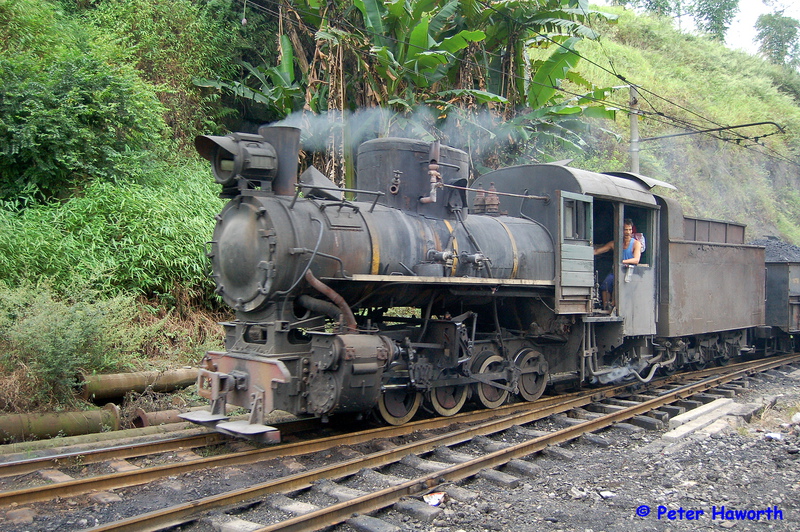
Some of the cabs at Shibanxi have a door in the front half of the cabside; this is likely to be for maintenance access rather than personnel. This photo shows the door open (Photo © Peter Haworth)
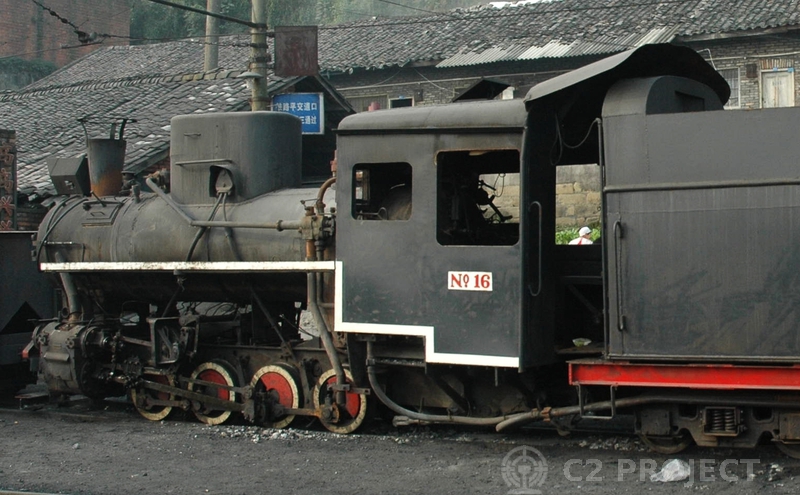
New-build loco #16 at Shibanxi, with an all-steel cab built to the traditional dimensions. Note the open back and the handrail; crew access is via the step on the front of the tender frame. (Photo © Paul Molyneux-Berry)
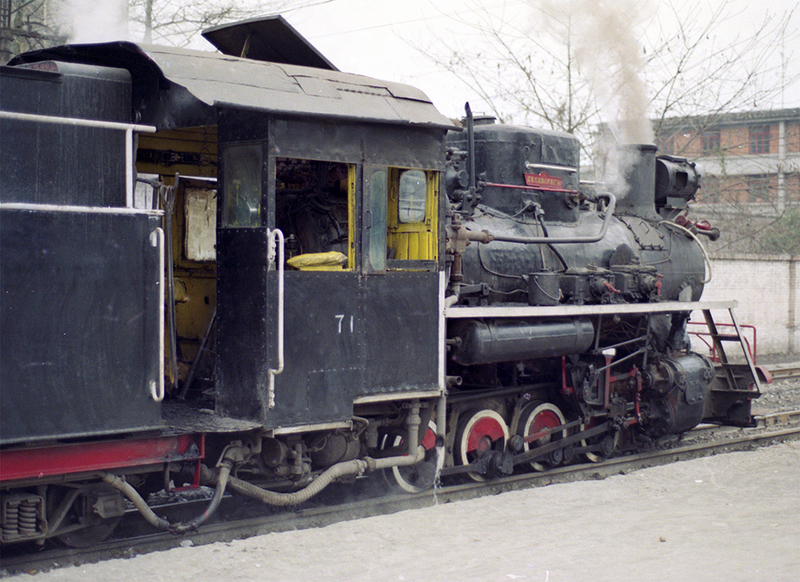
A Pengzhou cab, showing that most of the cab back is open, and there is a window in the small panel behind the driver. The design of tender at Pengzhou allowed good rearward visibility, in contrast to those at Shibanxi. (Photo © Robin Gibbons)
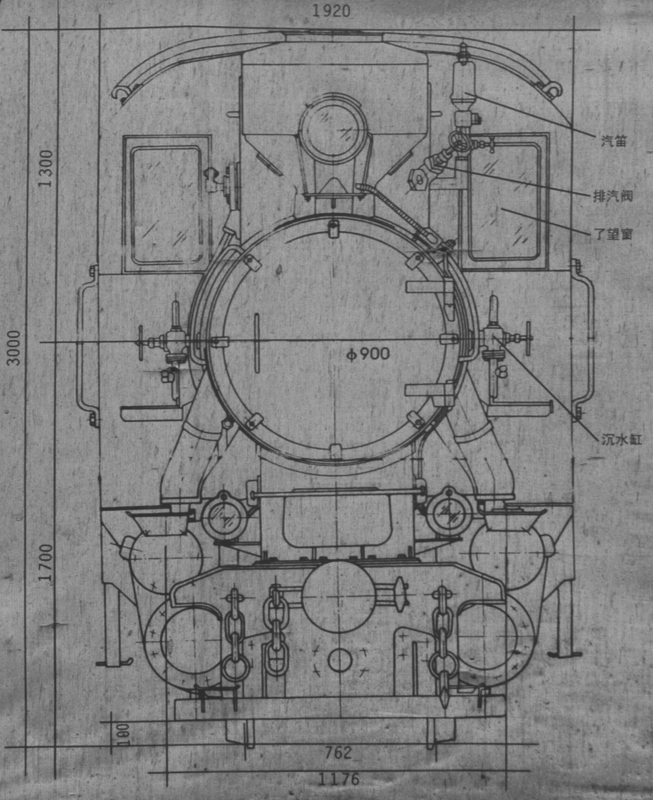
Front elevation drawing displayed on the wall at Shixi Works, Shibanxi Railway (Photo © Paul Molyneux-Berry)
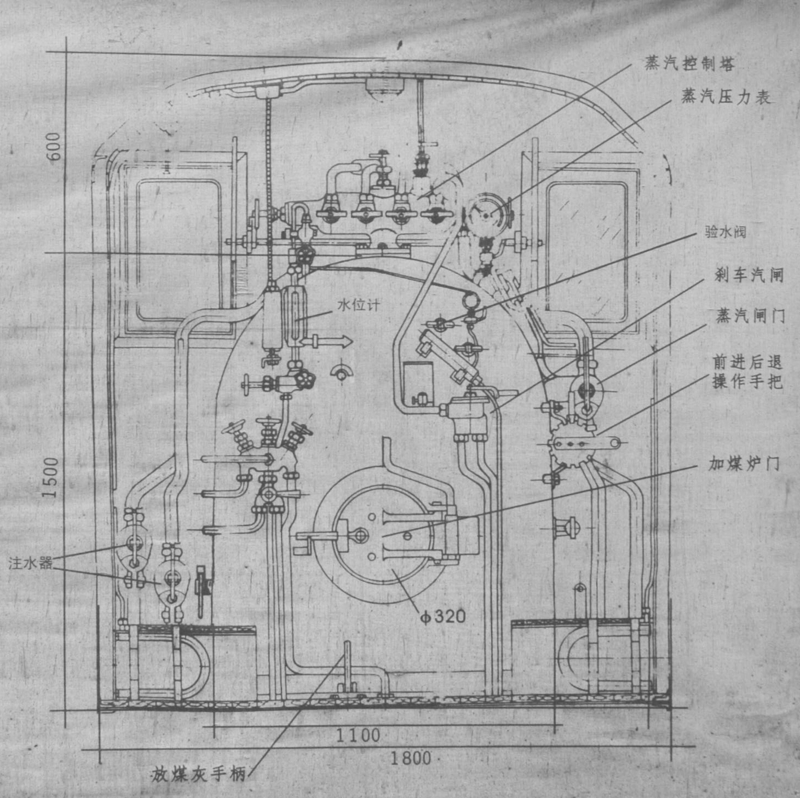
Footplate layout drawing displayed on the wall at Shixi Works, Shibanxi Railway (Photo © Paul Molyneux-Berry)
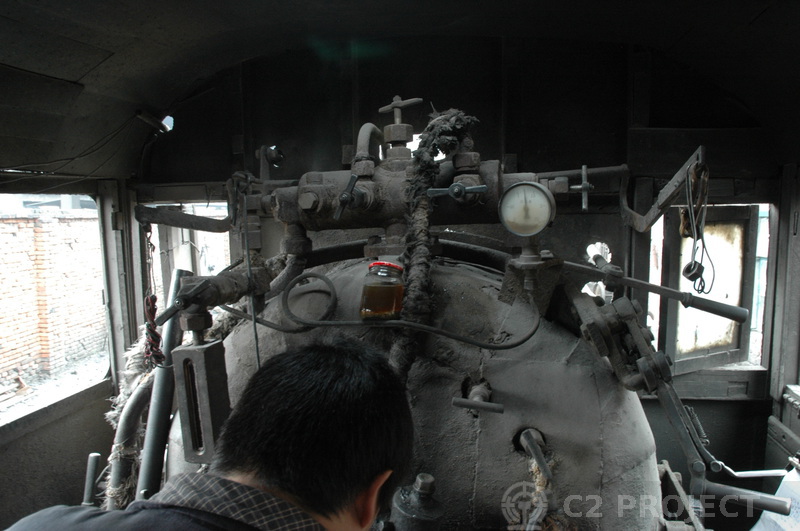
Cab interior of a Shibanxi C2, looking forwards (Photo © Paul Molyneux-Berry)
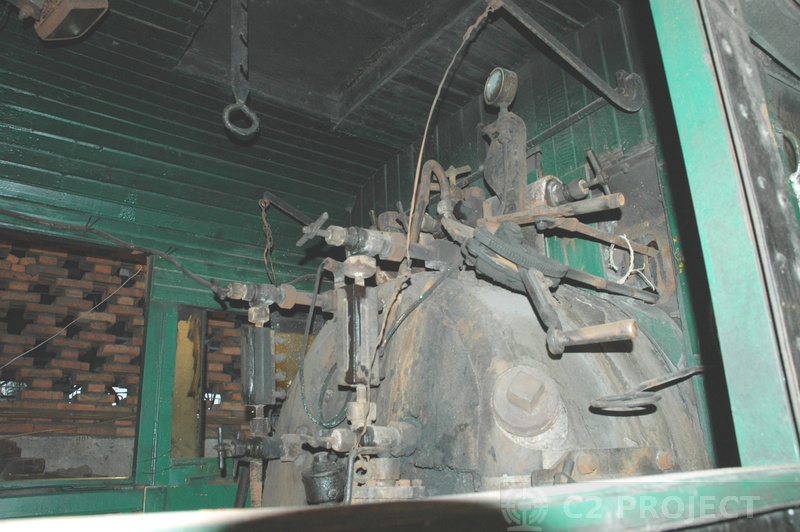
Cab interior of an unrebuilt Pengzhou loco at Shixi works (Shibanxi Railway) showing two gauge glasses and green wooden plank lining (Photo © Paul Molyneux-Berry)
The 'Chinese Wide' Cab
These 'long' cabs represent the type being built at the end of C2 production at Harbin, but may also have been built at Shijuazhang. This cab is much larger than the Russian cab, being 280mm wider and 300mm longer. It seems that many earlier 28-tonne locos (C2s and their predecessors) were rebuilt with this type of cab.
The cab has a steel structure but retains wooden ribs and a double-skinned insulated exterior, and is completely enclosed with a corridor connection to the tender. The windows are mounted in steel frames with rounded corners; the glass is fitted with rubber trims. Being much wider, it is possible to see backward past the tender and small windows are provided in the cab back for this purpose.
This is the type of cab carried by our Dahuichang #4 (Harbin 221) when we purchased it, though it had previously carried a different style (see below).
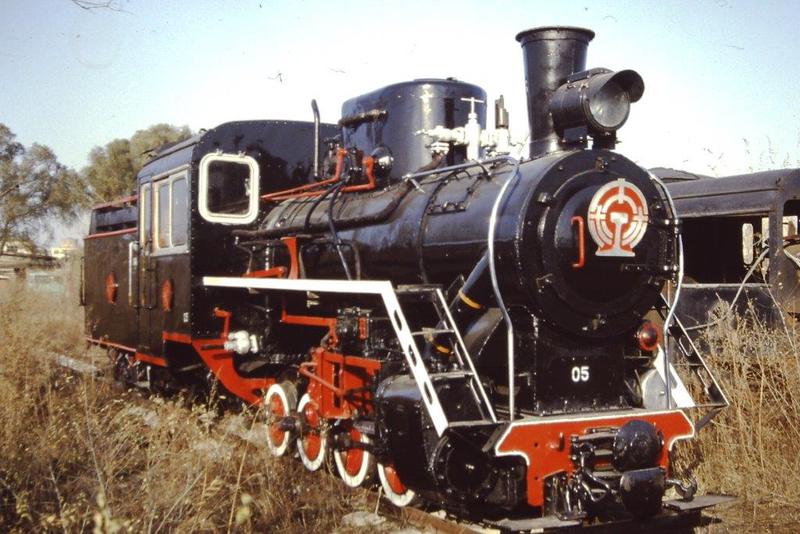
Newly-built or overhauled C2 at Harbin Works in 1987 showing the standard long, wide cab (Photo: © Mike Jackson)
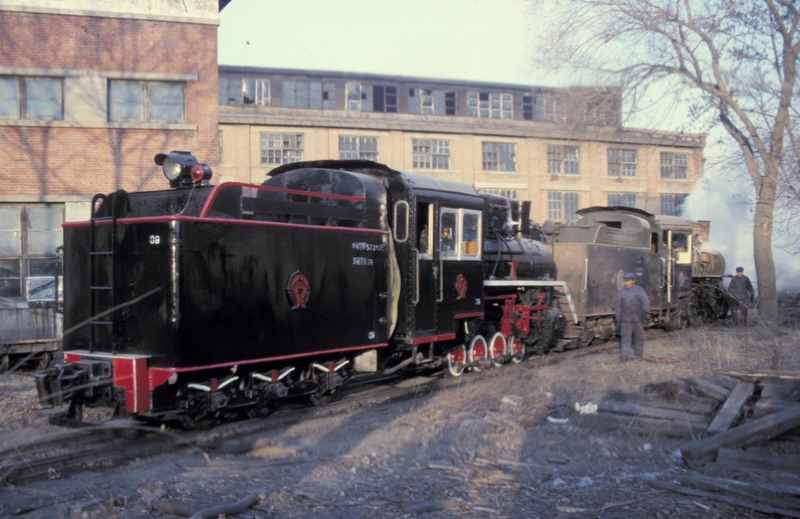
Newly-built or overhauled C2 at Harbin Works in November 1986 showing rear windows (Photo: © Mick Pope)
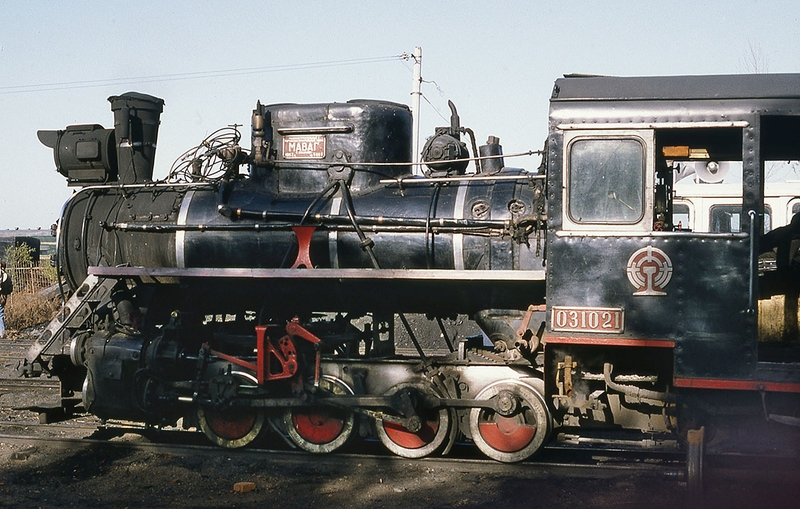
C2 carrying MAVAG (Hungary) worksplate, but with Harbin-style cab and bogie tender (not shown) at Suiling in 1992 - perhaps a very heavy rebuild? (Photo © David Kitching)
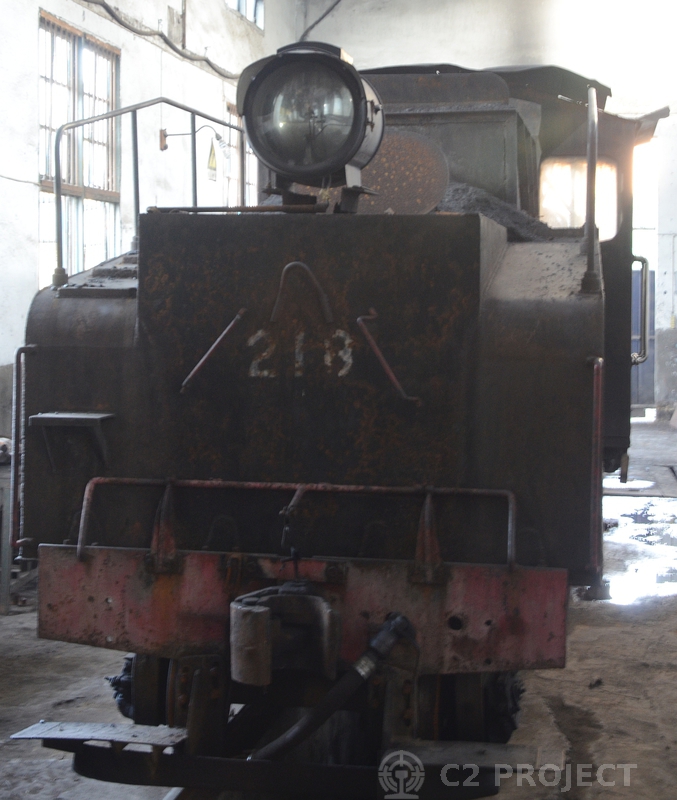
The cabs on Harbin 218 and 218 at Rongshan have a wider rear window. The slope-back tenders at Rongshan allowed good rearward visibility (Photo © Paul Molyneux-Berry)
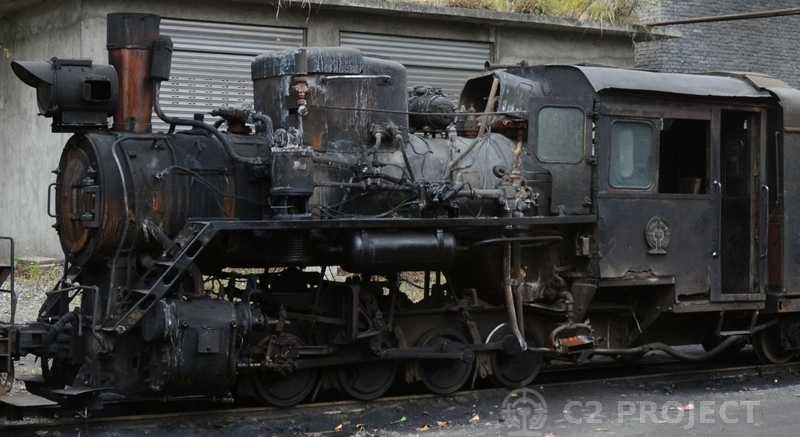
On some railways C2s were fitted with air brakes, and the compressor was normally mounted on the fireman's side running board. To ease access to the pump when on the move, a doorway was fitted to the front of the cab. Various styles existed; Harbin 211 at Rongshan has a neat door that is probably an original fitment from the factory (Photo © Paul Molyneux-Berry)
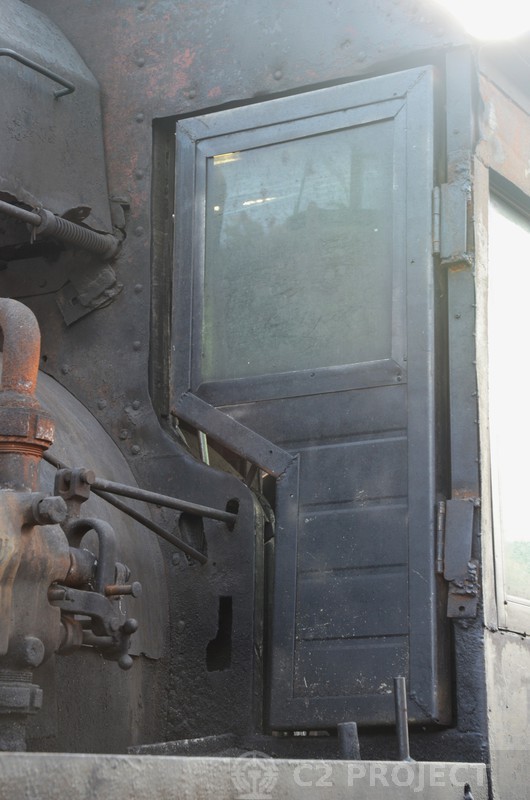
In contrast, 219 at Rongshan has a locally-made replacement (Photo © Paul Molyneux-Berry)
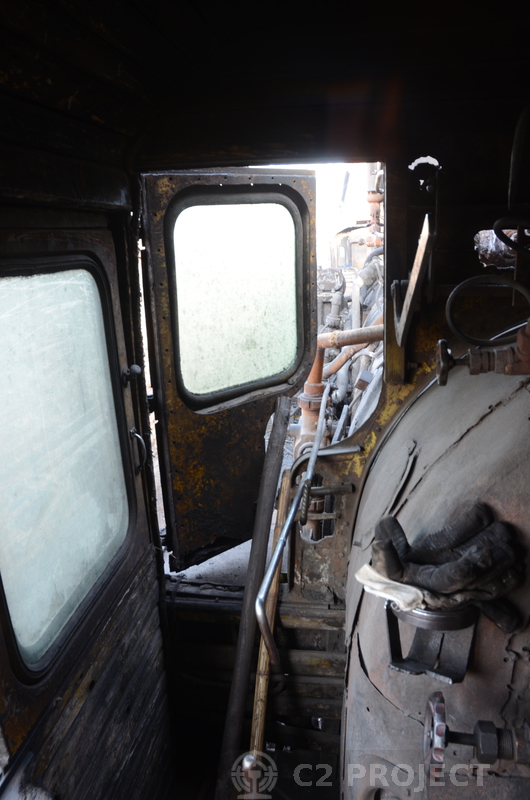
Fireman's side of the cab of Harbin 211 at Rongshan, showing the door onto the running board. (photo © Paul Molyneux-Berry)
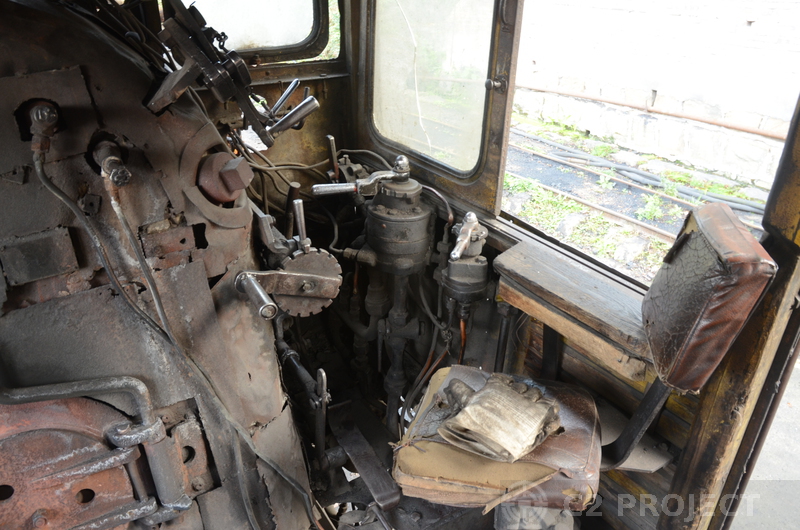
Driver's side of the cab of Harbin 211 at Rongshan, showing the regulator, reverser, air brake controls and upholstered seat (photo © Paul Molyneux-Berry)
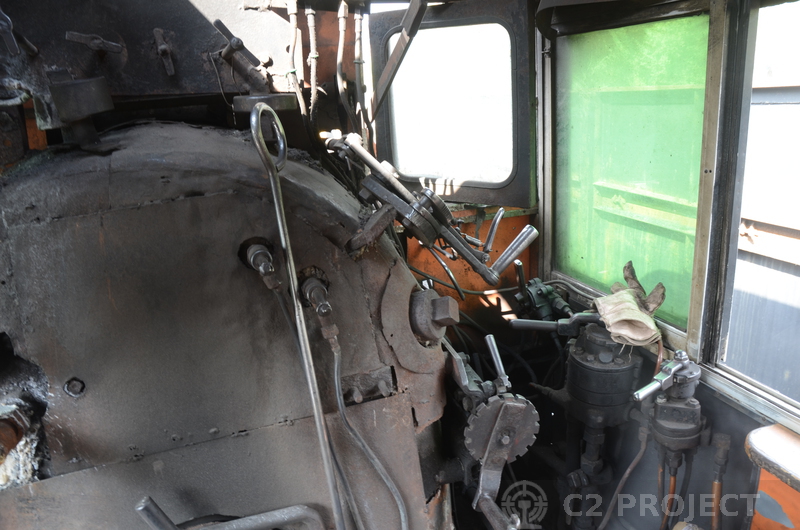
The cab of Harbin 219 at Rongshan, showing non-standard tinted windows. Note that the front window is pivoted at top and bottom, and swings round to open. Most cabs of this type had hinges at the top with the window opening upwards. Another non-standard feature is that the steam manifold is outside the cab (photo © Paul Molyneux-Berry)
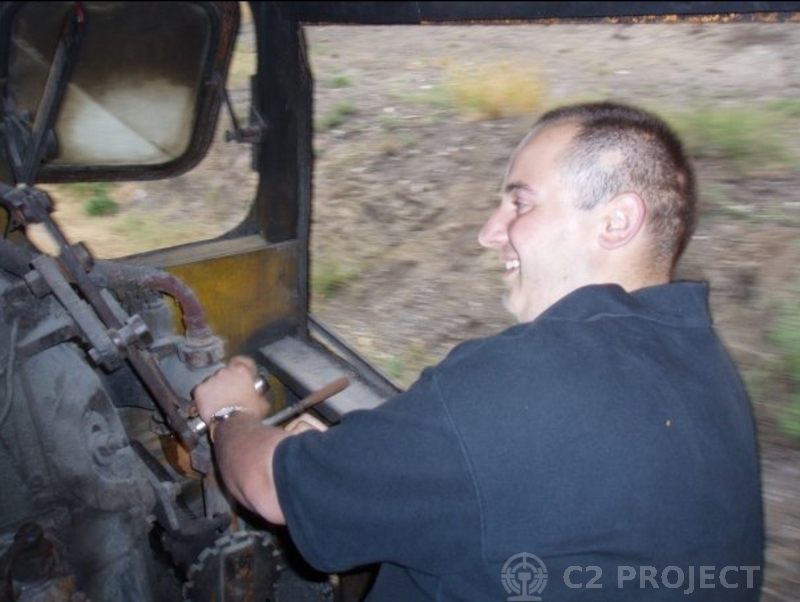
The author driving a C2 at Dahuichang, showing the front window hinged forward. The standard colour for C2 cab interiors was yellow, but orange, green and blue were also used. (photo © Andrew Nelms)
'Chinese Narrow' Cab
Some locos carried a long cab very much in the style of the Chinese Wide, but narrower and with a profile more like the Russian cab. The front window was in the round-cornered style but much narrower, while no rear window was fitted. Our loco carried this cab type until 1998, as did Dahuichang '01' - both pictured below. We have found very few photos of locos with this cab type; perhaps it was an intermediate stage of development that was not made for long.
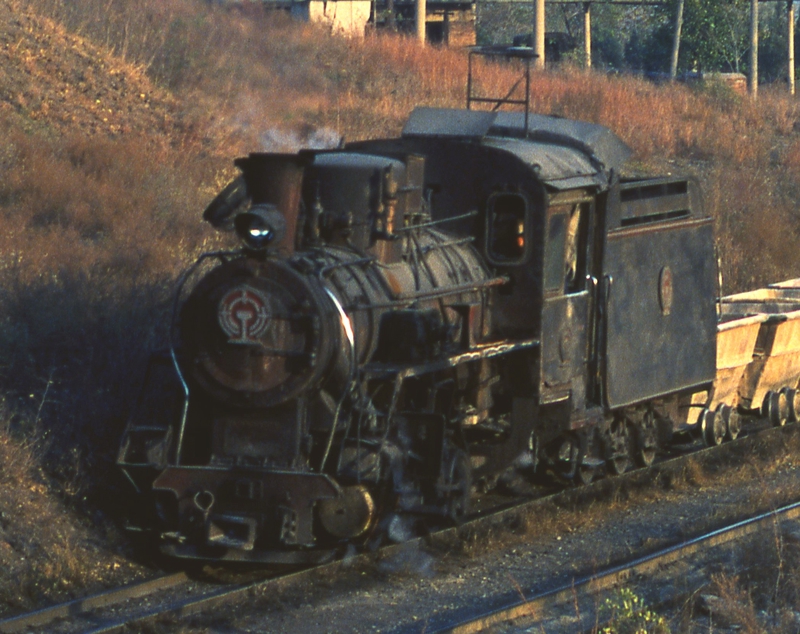
Our C2, Dahuichang #4 in 1997 with narrow cab before its major rebuild. (Photo © Bruce Evans, cropped to highlight the loco)
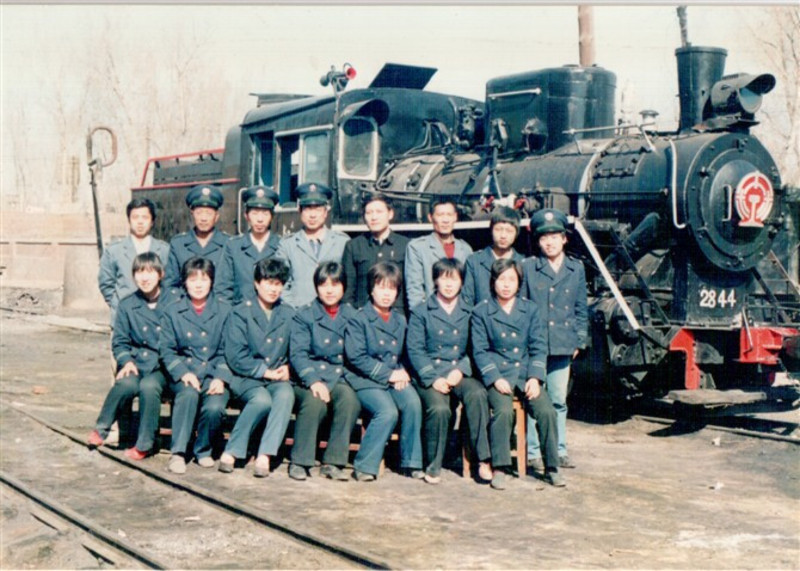
This loco at the WangDu local railway has a slightly different style of long, narrow cab. (from the blog of a retired steam driver: http://xi7721100.blog.163.com/blog/static/91338381201101624335730/ )
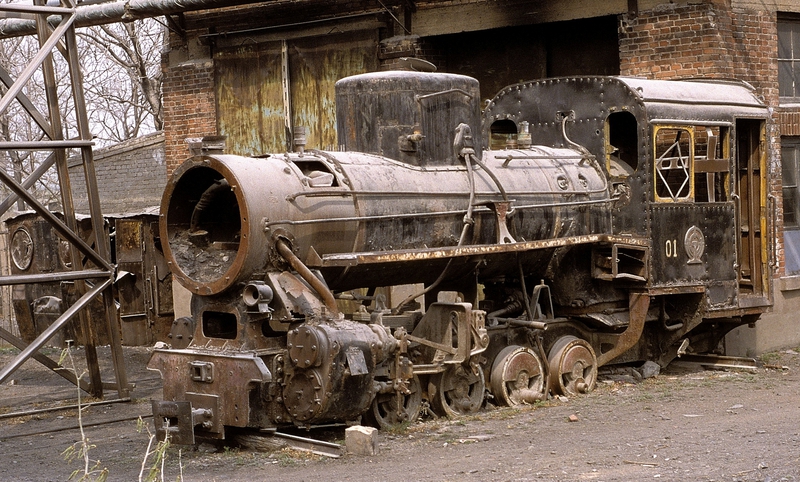
Dahuichang 01 dumped in 1999. Note the narrow front windows, lack of rear windows, and running board flush with the narrow cabside (Photo: © Hansjörg Brutzer, cropped to highlight the loco)
Half Chips, Half Rice
So, you want a wide cab, and a narrow cab? The 'wide above, narrow below' cab shape was used at several railways including Wang-Bai, Lingjiang, Sanchazi, Dashitou, Huangnihe and Kaifeng. Not all were the same shape and some contrasting examples are shown below. It is likely that this cab type originated at Dunhua works in Jilin Province. The window styling is similar to both the previous types described.
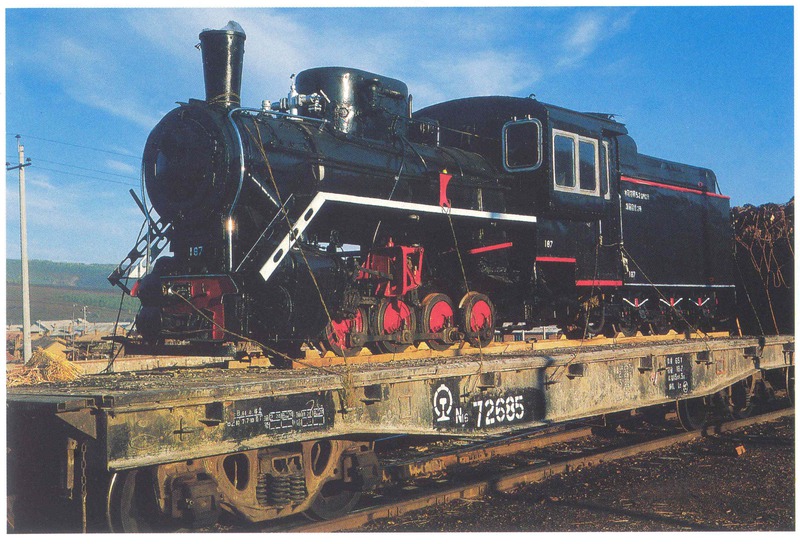
A newly-overhauled C2 being delivered, with the 'wide above, narrow below' cab shape with large curve radius (from 'A Picture Album of Steam Locomotives in China', ISBN 7-113-04147-7)
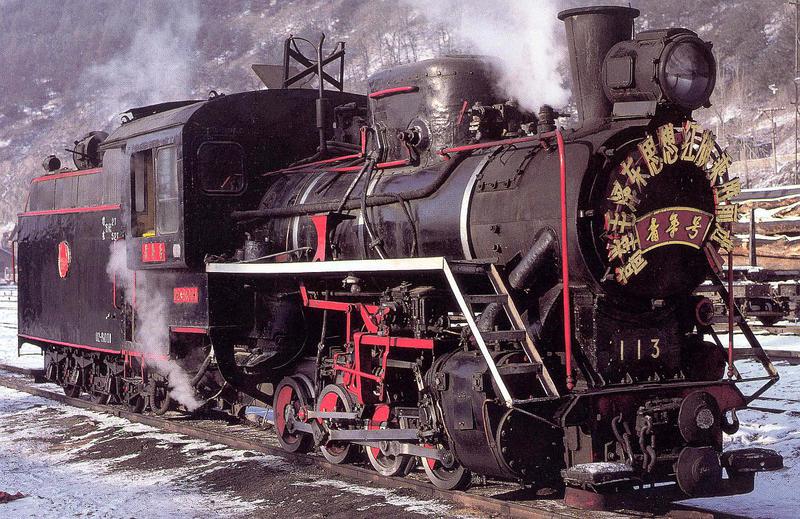
A highly-decorated and very clean C2 at Sanchazi, showing the 'wide above, narrow below' cab shape with sharper corner (from 'Steam on 4 Continents' Part IV by G.Haslbeck & D. Wardale, ISBN 3-925314-03-2)
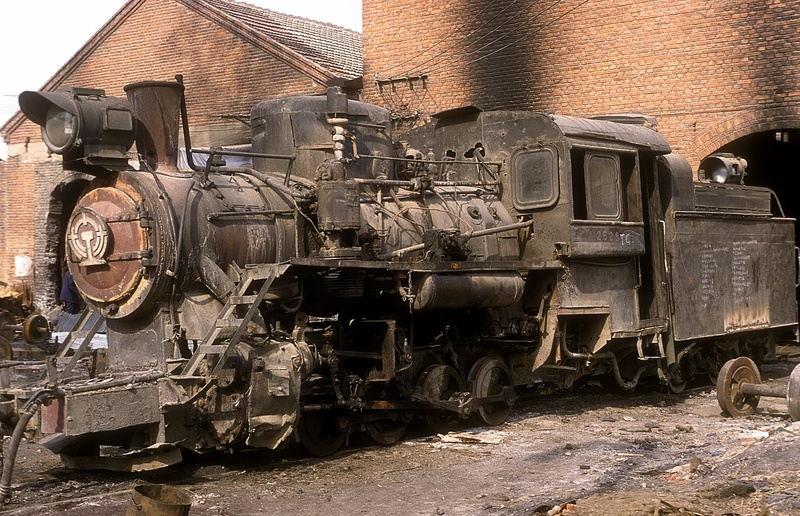
This photo of 2826 at Tangxian on the Wang-Bai local railway in April 2000 shows the cab shape clearly. (Photo © Hansjörg Brutzer)
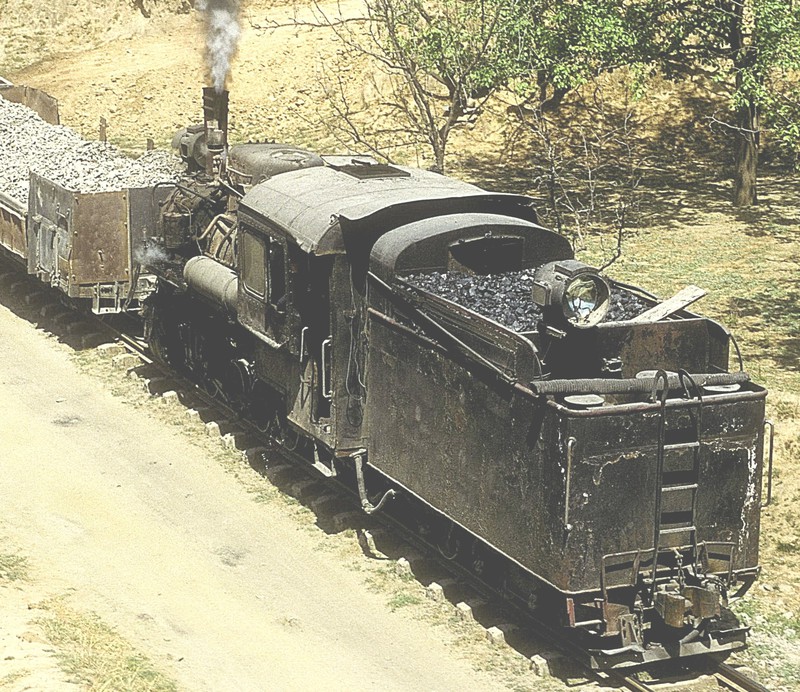
Rear view of 1B-009 on the Wang-Bai line on the local railway shows how the wide roof overhangs the narrow door. (Photo © Hansjörg Brutzer, cropped to highlight the loco)
Other Long Cab Designs
Many C2s carried long cabs of more traditional construction, with square wooden-framed windows.
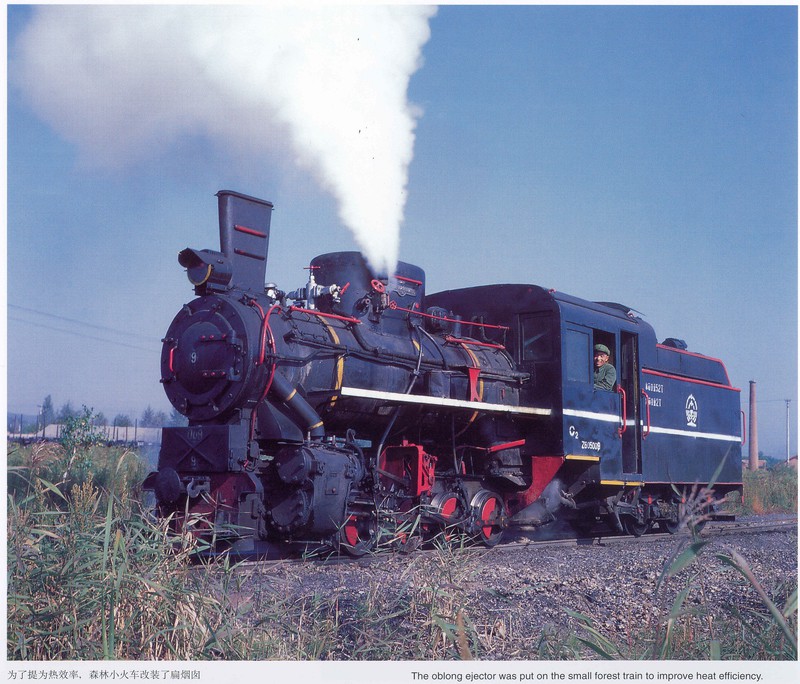
A newly-overhauled C2 with a long and wide cab but traditional square-cornered windows (from 'A Picture Album of Steam Locomotives in China', ISBN 7-113-04147-7)
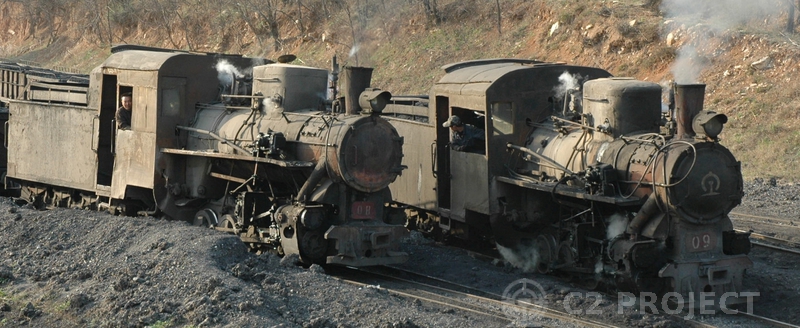
The locos at Yinghao had long cabs on short frames. Probably locally modified, they were relatively wide but did not have rear windows. (Photo © Paul Molyneux-Berry)
Oddities
There were some C2s with unusual cab shapes, as a consequence of local modifications. Here's an example; there are some more in 'Narrow Gauge Railways of China: Guangdong, Jiangxi and Fujian Provinces' by John Athersuch, ISBN 978-1-900340-33-5, and 'A Picture Album of Steam Locomotives in China', ISBN 7-113-04147-7
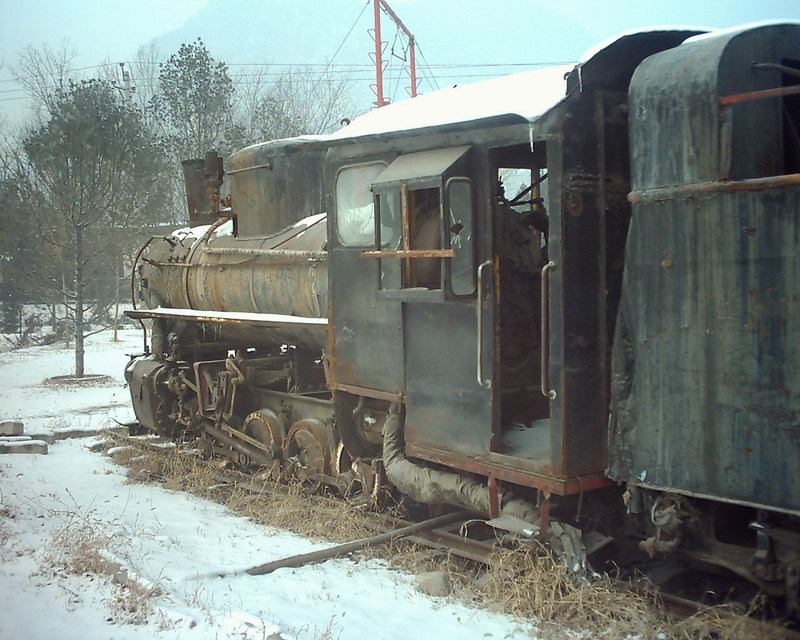
One of the 28-tonne locos which worked at Yexi, later placed in a park nearby. There were doors in the front and rear parts of the cabside, and a 'bay window' in between.(From the forum bbs.hasea.com)
Plans for our cab
The cab is the only part of our locomotive that is substantially outside the Ffestiniog Railway loading gauge. If the loco is to fit, we have to modify the cab shape.
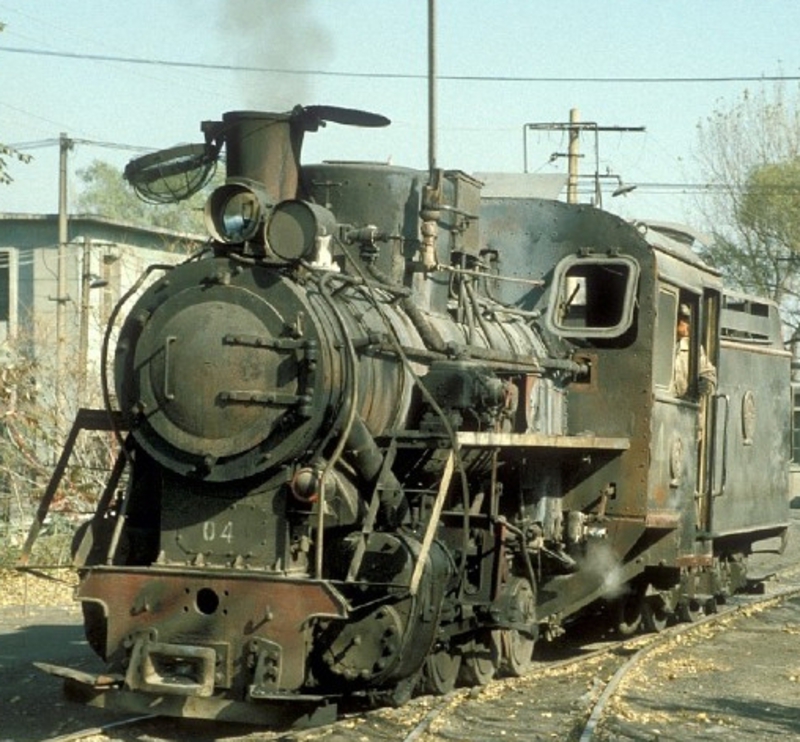
This photo of #4 at Dahuichang in 1999 clearly shows the wide cab (photo © Brian Hawkins, cropped to highlight loco)
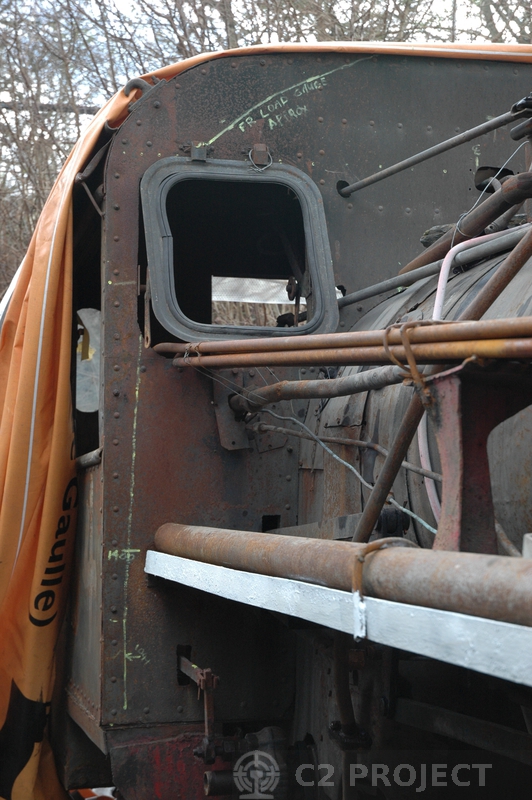
Just after #4 arrived in Wales, we marked the line of the FR loading gauge on the cab front (photo © Paul Molyneux-Berry)
To make the cab fit, our starting point has been the cab cross-section shown in our KP-4 drawings (shown in blue in the drawing below), as this is smaller than the Chinese design (yellow). However, it still doesn't fit! Although the result is a little smaller all round, it retains the characteristic shape of the original cab carried by our loco.
We have lowered the back of the frames by 100mm to allow the whole cab to be mounted 100mm lower, whilst maintaining headroom inside. We also intend to narrow the cab by 25mm each side. This creates the green profile which brings the top corners within the loading gauge, and provides space for the cabside handrails too.
We intend to retain the style of the minor details such as windows, gutters and the roof extension over tender corridor connection. We will add windows in the back of the cab, and modify the tender to provide rearward visibility.
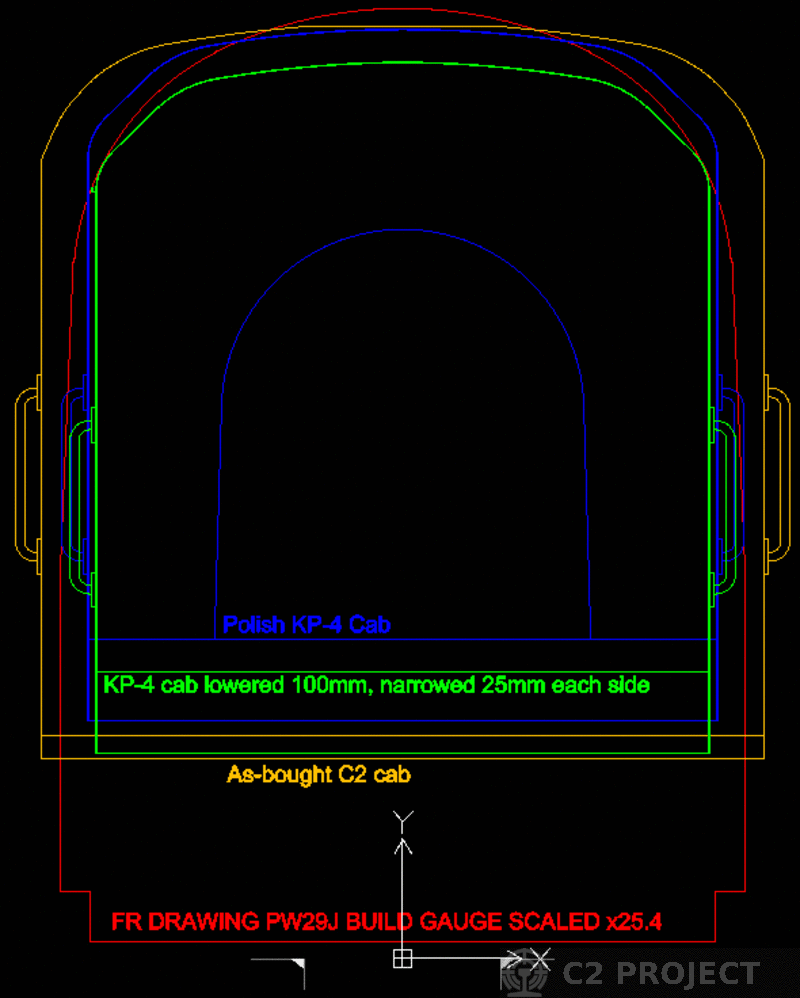
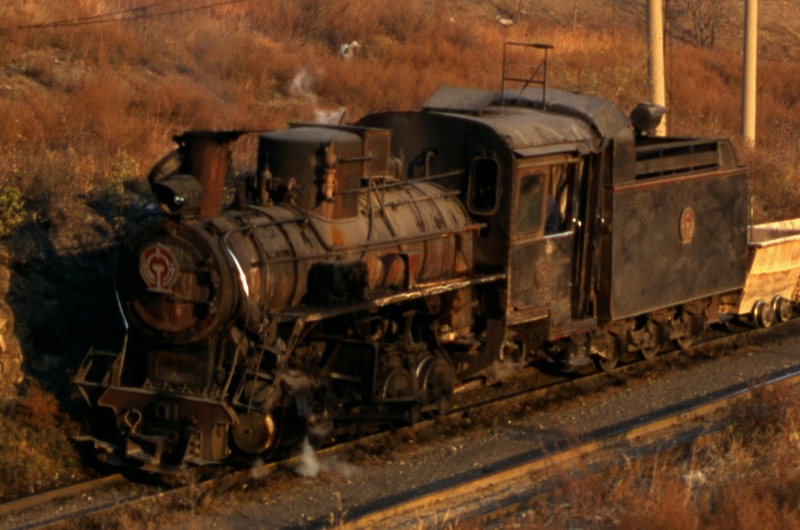
Our loco in 1997, with its original narrow cab. Our cab will be based on this shape, with narrow front windows and running board flush with the narrow cabside (Photo: © Bruce Evans, cropped to highlight loco)
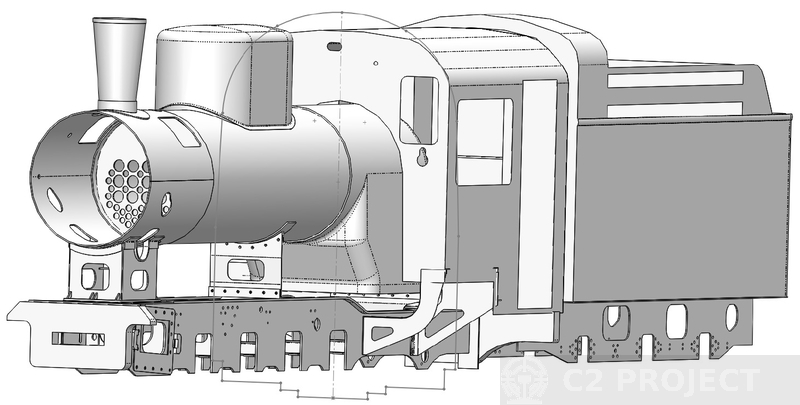
Proposed cab shape for our rebuilt C2. In this view the cab supports remain at the height and width shown in the KP-4 drawings; they will be modified to suit. (Solidworks model © Paul Turner)